Bed Bugs… Or Bat Bugs?
Bed Bugs… Or Bat Bugs?
A Case of Mistaken Identity?
It that just perhaps a mispronunciation? Or even just two names for the same creature? Surprisingly, no. While they are closely related and their differences are practically undiscernible by the untrained eye, bed bugs and bat bugs are actually very different creatures. 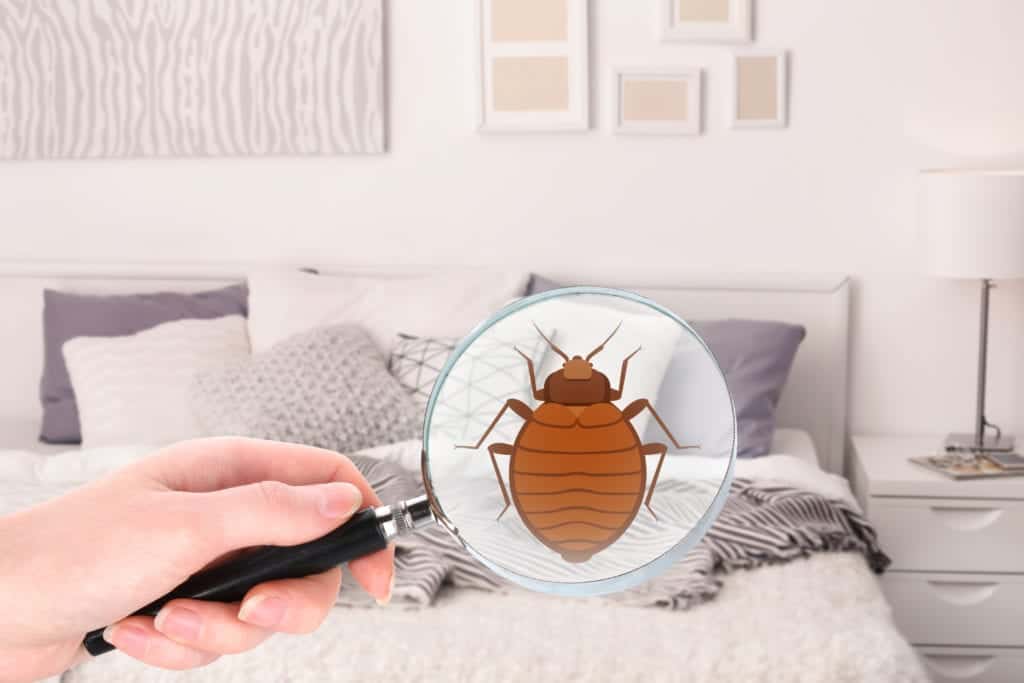
Similarities
Bed bugs and bat bugs are members of the Cimicidae family and feast on the blood of mammals. They look extremely similar and are very difficult to tell apart without close examination. Just like bed bugs, bat bugs also do not carry diseases with their bites, however they can harbor different pathogens on the outsides of their bodies so, in the rare case that they find their way into your home, you will want to eradicate them as soon as possible. The primary difference between these two bloodsucking bugs is actually the mammals that they feed on. Bat bugs, true to their names, primarily feed on bats, while bed bugs primarily feast on us. Interestingly, it was previously believed that the specific genus of bed bugs that feed on humans evolved several million years ago from a version of the bed bug that fed on bats. As early humans shared the caves with these bats, it was assumed that the bugs adapted to also feeding off humans as a secondary source of blood. However, newly discovered evidence proves that Cimicidaes – the family of insect that bed bugs belong within – existed 80 million years before bats even came into existence. The findings also cited evidence that the types of bed bugs that feed on humans may have evolved roughly 47 million years ago. So, while both bed bugs (Cimex lectularius) and bat bugs (Cimex ajunctus) have a lot of similarities, they are very clearly separate subspecies with many differing attributes. 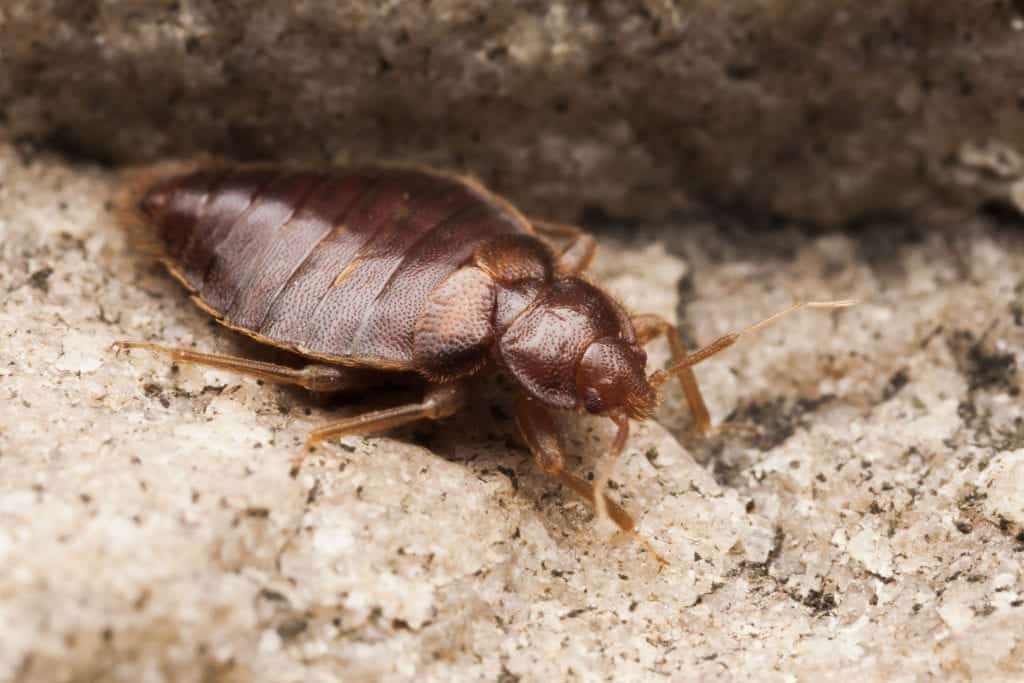
Habitats
The dietary differences between these two subspecies is the primary reason for their respective habitats. Bed Bugs (Cimex lectularius): These sneaky, bloodsucking insects are masters of concealment and operate by hitchhiking from location to location in order to find other hosts. Due to this, the cleanliness and the secure nature of your home is of no consequence to them, meaning that it is very difficult to takes steps to prevent an infestation. Typically, bed bugs remain hidden in small, dark places within your home. This can include under your mattress, inside drawers, behind picture frames, burrowed in the edging of carpets, inside electrical outlets, in fabric seams, inside box springs, around/under cushions, in clothing, inside luggage, etc. Bat Bugs (Cimex adjunctus): Just like their cousins, bat bugs prefer to stay hidden, however they are very unlikely to ever be in a bedroom. They occupy different cracks and crevices in areas where bats are present. This can sometimes mean caves, but in the case of houses this often includes, cracks along chimneys, voids in walls or siding, inside abandoned/run down homes, and occasionally inside attics. 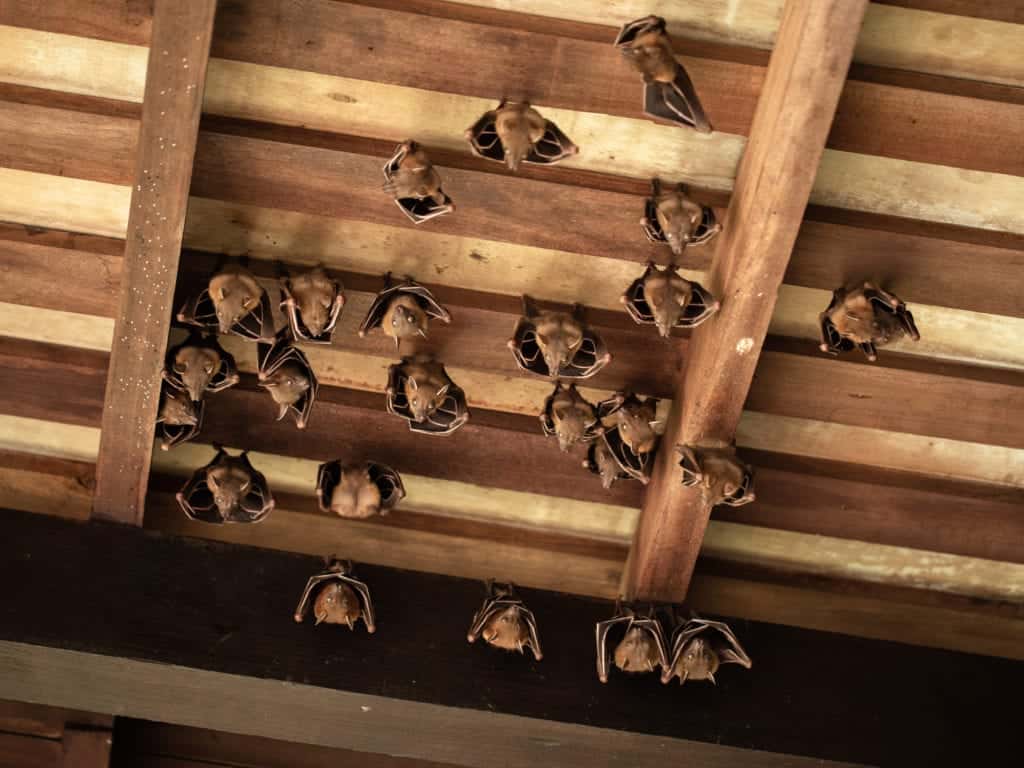
Appearance
The differences between these two creatures are so minute that a microscope or magnifying glass are typically needed to determine one from the other. Both are reddish-brown in color, have six legs, are shaped like an apple seed, have two antennas, are flat, and have eyes poking out on either side of their heads. Bed Bugs (Cimex lectularius): Bed bugs are generally a tad larger in size, able to reach up to 7mm long. They are also hairy, but not nearly as hairy as their cousins. Bat Bugs (Cimex adjunctus): The maximum size for bat bugs comes in at roughly 5mm long, making them generally smaller than their cousins. Bat bugs also tend to be darker and richer in color, although this is not always the case, so it is not a foolproof way of identifying one from the other physically. The easiest way to tell the difference between the two is actually the excessive hair of the bat bugs. The hairs along the edge of their flat-ish bodies are roughly 4 times larger than those of bed bugs, extending beyond the widths of their eyes, while the hair on bed bugs is far smaller than the width of their eyes. 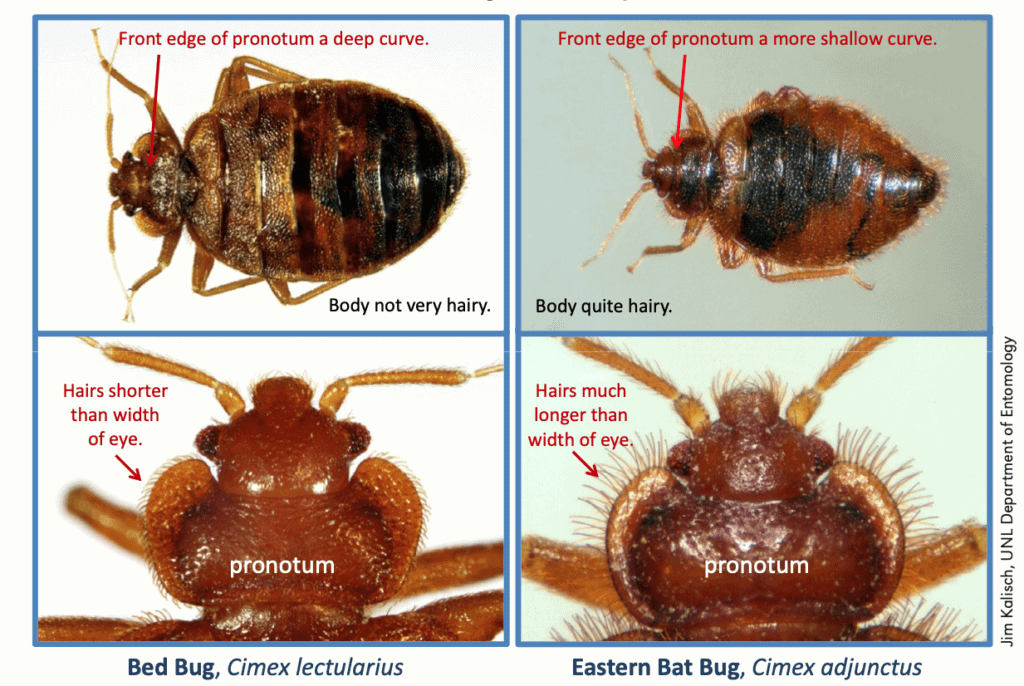
Controlling Bed Bugs and Bat Bugs
Despite their relation and similarities, bed bugs and bat bugs actually require different pest control techniques to eradicate them. Bed Bugs (Cimex lectularius): To treat your home for bed bugs with a traditional chemical treatment requires a minimum of 2-3 visits to target the bugs as they mature. This is because chemical treatments are not effective on bedbug eggs. So, while it may appear as though the problem has disappeared once the adults stop biting, it’s only a matter of time before the eggs begin to hatch and the nymphs start searching for their blood meals. Then, it’s difficult to retreat in time as the eggs will hatch at different times and continuously spraying chemicals in your home, especially in your bed, is not at all ideal. That is why heat is our weapon of choice to combat beg bugs! Intense heat will kill both adult bed bugs and their eggs. This treatment is also ecofriendly and safe, which is why it has quickly become the leading defense against bed bugs today. The infected area must be heated to at least 115°F (46°C). Once the area has reached this heightened temperature, it must be maintained for roughly 10 minutes, which is ample time for the little creepy crawlers to expire from exposure to the heat. Bat Bugs (Cimex adjunctus): Bat bugs are far easier to eradicate than bed bugs. Once any bats have been removed from the premises in question, there are a couple of different treatments that can be applied to rid any remaining bat bugs. Bat bugs have not built up the resistance to different insecticides that bed bugs have so there are a few different kinds of spot treatments and dusts that can take care of these bugs relatively quickly. 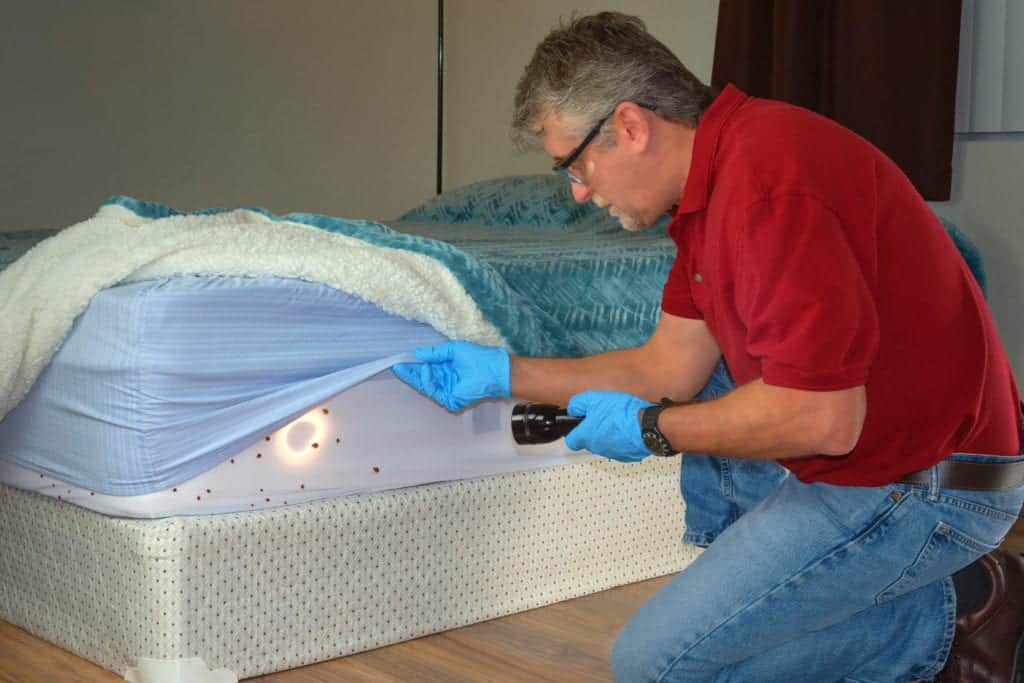
Citations
Cranshaw, W., Camper, M. and Peairs, F. (2013) Bat Bugs, Bed Bugs and Relatives, Colorado State University Extension. Available at: https://extension.colostate.edu/topic-areas/insects/bat-bugs-bed-bugs-and-relatives-5-574/ (Accessed: October 2020).
Damir, M. (2017) How to Deal with Bat Bugs, Pest Control Technology. Available at: https://www.pctonline.com/article/how-to-deal-with-bat-bugs/ (Accessed: October 2020).
Ferreira, B. (2019) “Bed Bugs Menaced the Dinosaur Age Before Moving into Our Mattresses,” The New York Times, 16 May. Available at: https://www.nytimes.com/2019/05/16/science/bedbugs-dinosaurs-evolution.html
MacMillan, A. (2017) Why Bed Bugs Are Becoming So Much Harder to Kill, Time. Available at: https://time.com/4733708/bed-bugs-insecticide-resistance/ (Accessed: August 2020).
Ogg, B. and Kalisch, J. (no date) Bat Bugs and Bat Ticks, Lancaster County University of Lincoln Nebraska. Available at: https://lancaster.unl.edu/pest/resources/351BatBugsTicks.pdf (Accessed: October 2020).
Potter, M. (2020) Bed Bugs, The University of Kentucky College of Agriculture, Food, and Environment. Entomology at the University of Kentucky. Available at: https://entomology.ca.uky.edu/ef636 (Accessed: October 2020).
Request a Free Quote Today
(We do not share your data with anybody, and only use it for its intended purpose)


